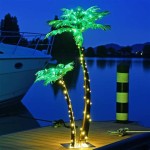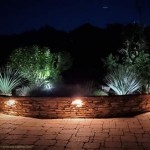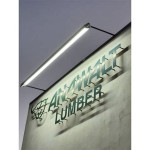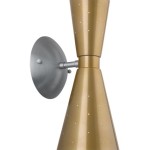Outdoor Dining Area Lighting Designs 2024
As outdoor living spaces continue to gain prominence, the demand for sophisticated and functional outdoor dining area lighting solutions is on the rise. The year 2024 sees a convergence of technological advancements, aesthetic preferences, and sustainability concerns shaping the landscape of outdoor lighting design. This article will explore key trends and considerations for illuminating outdoor dining spaces, focusing on designs that enhance ambiance, safety, and energy efficiency.
The selection of appropriate lighting significantly impacts the usability and enjoyment of an outdoor dining area. Thoughtful lighting design extends the hours during which the space can be utilized, creating a welcoming atmosphere for entertaining guests or enjoying quiet meals. Furthermore, strategically placed lighting contributes to safety by illuminating pathways and potential hazards, ensuring a secure environment for all users. The interplay between functionality and aesthetics is crucial in achieving a successful outdoor lighting scheme.
Several factors influence the design of outdoor dining area lighting, including the size and layout of the space, the architectural style of the surrounding structures, and the intended use of the area. A small patio may require minimal lighting, focusing on creating a cozy and intimate atmosphere, while a larger deck intended for frequent entertaining may necessitate a more complex and versatile lighting system. Understanding these nuances is paramount to creating a lighting design that complements the overall aesthetic and functionality of the outdoor dining space.
Layered Lighting for Enhanced Ambiance
One of the key principles of effective outdoor lighting design is layering. Layered lighting involves using multiple types of light sources to create depth, dimension, and visual interest. This approach moves beyond simply providing illumination; it aims to sculpt the space with light, highlighting architectural features, accentuating landscaping, and creating a mood that enhances the dining experience. The three primary layers of lighting are ambient, task, and accent lighting.
Ambient lighting, also known as general lighting, provides overall illumination to the space. It establishes a baseline level of light that allows for safe navigation and movement. In an outdoor dining area, ambient lighting can be achieved through various methods, including string lights, lanterns, and strategically placed spotlights. The key is to select fixtures that provide a soft and diffused light, avoiding harsh glare or overly bright illumination. The color temperature of the ambient lighting should also be carefully considered, with warmer tones generally preferred for creating a relaxing and inviting atmosphere.
Task lighting, as the name suggests, is designed to provide focused illumination for specific tasks, such as food preparation, serving, or reading. In an outdoor dining area, task lighting is typically concentrated around the dining table or any outdoor kitchen area. Pendant lights suspended above the table, directional spotlights aimed at a serving area, or table lamps placed strategically can all serve as effective sources of task lighting. Dimmable features are highly desirable, allowing for adjustments to the light level based on the specific activity and desired ambiance.
Accent lighting is used to highlight specific features or objects in the outdoor dining area, adding visual interest and creating focal points. This can include highlighting architectural details, accentuating plants or sculptures, or drawing attention to unique textures or materials. Uplighting trees, using spotlights to illuminate a water feature, or placing small spotlights to highlight a decorative wall are all common techniques for incorporating accent lighting. The intensity and color of the accent lighting should be carefully considered to ensure it complements the overall lighting scheme and enhances, rather than detracts from, the dining experience.
Smart Lighting and Automation
The integration of smart lighting technology is increasingly prevalent in outdoor lighting design, offering enhanced control, convenience, and energy efficiency. Smart lighting systems allow users to control lighting fixtures remotely, adjust brightness levels, and even schedule lighting scenes to activate at specific times. This level of automation not only simplifies operation but also contributes to energy savings by ensuring that lights are only used when needed. The ability to control lighting remotely through a smartphone or tablet provides unparalleled flexibility and convenience.
Smart lighting systems often incorporate motion sensors, which can automatically activate lights when movement is detected. This feature is particularly useful for enhancing security and safety in outdoor areas. For example, motion-activated lights can illuminate pathways and entrances, deterring potential intruders and providing added visibility for residents and guests. The sensitivity and range of the motion sensors can be adjusted to minimize false alarms and optimize performance.
Color-changing LED bulbs, controlled through a smart lighting system, offer the ability to customize the ambiance of the outdoor dining area with a wide range of colors and lighting effects. This feature is particularly appealing for creating a festive atmosphere for parties or special events. Users can select from a pre-programmed palette of colors or create custom color schemes to match their personal preferences or the theme of the event. This level of customization allows for a dynamic and engaging lighting experience.
Energy efficiency is a significant consideration in the design of all outdoor lighting systems. Smart lighting systems often include features that optimize energy consumption, such as automated dimming based on ambient light levels. By automatically reducing the brightness of lights during periods of high ambient light, these systems can significantly reduce energy waste. The use of LED lighting, known for its high energy efficiency and long lifespan, is also a key component of sustainable outdoor lighting design.
Sustainable and Eco-Friendly Solutions
Sustainability is a growing concern in all aspects of design, and outdoor lighting is no exception. Consumers are increasingly seeking eco-friendly lighting solutions that minimize environmental impact and reduce energy consumption. The use of sustainable materials, energy-efficient technologies, and responsible lighting practices is essential for creating environmentally conscious outdoor dining areas. LED lighting, solar-powered fixtures, and mindful light placement are all key elements of sustainable outdoor lighting design.
LED lighting is the preferred choice for sustainable outdoor lighting due to its high energy efficiency, long lifespan, and durability. LED bulbs consume significantly less energy than traditional incandescent or halogen bulbs, resulting in lower electricity bills and reduced carbon emissions. Their extended lifespan also reduces the frequency of bulb replacements, minimizing waste and maintenance costs. The robustness of LED lighting allows it to withstand harsh weather conditions, making it ideal for outdoor applications.
Solar-powered lighting fixtures offer a completely off-grid solution for outdoor dining areas. These fixtures utilize photovoltaic cells to convert sunlight into electricity, which is then stored in batteries for use at night. Solar-powered lights are particularly well-suited for areas where running electrical wiring is difficult or impractical. While the initial cost of solar-powered lights may be higher than traditional fixtures, the long-term savings on electricity bills and the environmental benefits make them a compelling option.
Responsible light placement is also a crucial aspect of sustainable outdoor lighting design. Minimizing light pollution is essential for protecting wildlife and preserving the natural night sky. Aiming lights downwards, using shielded fixtures to prevent light trespass, and avoiding over-illumination are all important practices for reducing light pollution. Consider the impact of your lighting on neighboring properties and the surrounding environment when planning your outdoor lighting scheme. Using timers and motion sensors helps to ensure lights are only on when needed, further minimizing light pollution and energy waste.

18 Outdoor Lighting Ideas To Make Your Garden Glow Gathered

10 Outdoor Furniture And Lighting Trends For 2024

Creative Patio Lighting Ideas To Enhance Your Outdoor Space Triangle Gardener

22 Outdoor Lighting Ideas Lowe S

Family Friendly Garden Lighting Ideas Brighten Your Outdoor Space With Fun And Functionality Growing

Gorgeous Ways To Decorate With String Lights

15 Budget Friendly Backyard Lighting Ideas 2025

Innovative Outdoor Lighting Solutions

Decorating The Patio With Fairy Lights Balsam Hill

Colorful European Inspired Backyard Refresh Nesting With Grace







